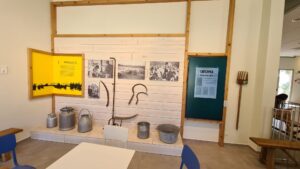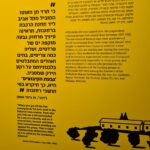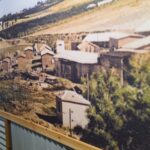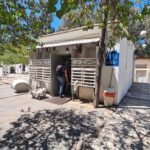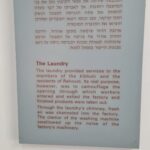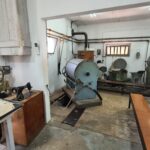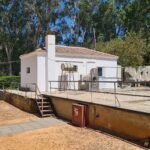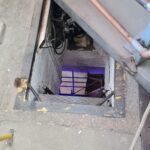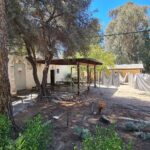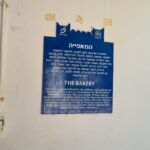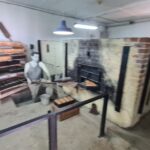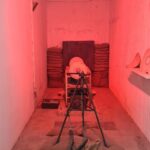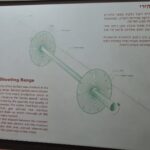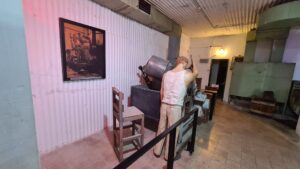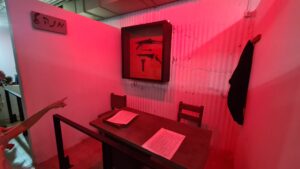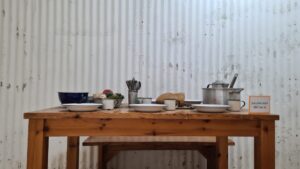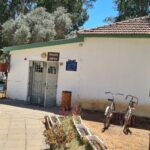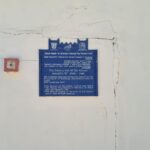Hi,
We decided to spend the first Shabbat after the school had begun in Ayalon Institute, near Rehovot.
Just like Mitzpe Gvulot, where we visited last week, the site is open for free in Sabbath as part of the Israeli Shabbat project.
The site tells the story of a secret underground ammunition factory of the Hagana during the pre-state time, which produced 2 million 9mm bullets. The bullets were used for the Sten submachine gun, the personal weapon of IDF warriors at the war of Indenpendence.
The location chosen is not trivial at all: near a Rehovot train station, a statio crowded with British soldiers.
Above the factory, a regular Kibbutz was built. Both the factory and the Kibbutz were operated by the members of the pioneer group “Hatzofim Aleph.”
Take Care
Gad
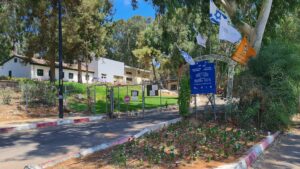 The entrance to Ayalon Institute on HaKibutzim hill (the name of the Kibbutz)
The entrance to Ayalon Institute on HaKibutzim hill (the name of the Kibbutz)
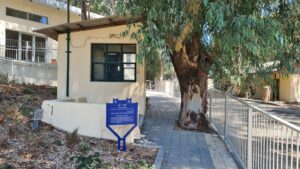 The sentry box, with a screw on the wall that actived an alarm in the underground factory
The sentry box, with a screw on the wall that actived an alarm in the underground factory
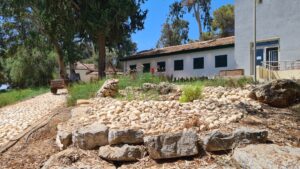 The children’s house, which is now part of the visitor center
The children’s house, which is now part of the visitor center
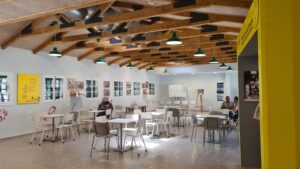 The children’s house on the inside
The children’s house on the inside
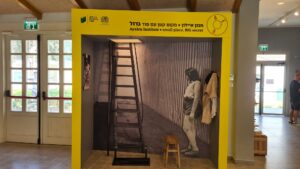 Ayalon institute – small place, Big secret
Ayalon institute – small place, Big secret
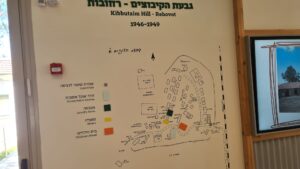 A map of HaKibutzim hill the wall of visitor center
A map of HaKibutzim hill the wall of visitor center
Training groups
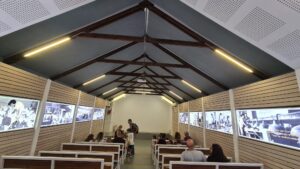 A warehouse which now used to show the movie on Ayalon institute
A warehouse which now used to show the movie on Ayalon institute
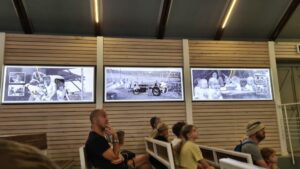 The pics on this side of the warehouse shows the ordinary life of the Kibbutz above the ground
The pics on this side of the warehouse shows the ordinary life of the Kibbutz above the ground
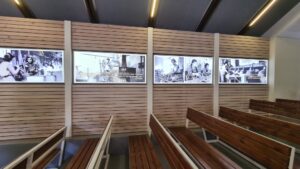 The pics on this side of the warehouse shows the work at the underground factory.
The pics on this side of the warehouse shows the work at the underground factory.
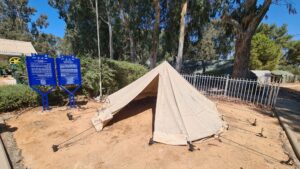 The tents the members of the Kibbutz lived in
The tents the members of the Kibbutz lived in
The Laundry which used to hide the entrance to the underground factory. The sound of the factory was hidden by the working washing machine. In order to allow it to work all day, a laundry shop was opened in Rehovot and mainly served the British army soldiers.
The bakery produced bread for the Kibbutz and Rehovot. The 10 ton oven had rails and covered a bigger access open to the factory which was only used 3 times: to get the machinery in, to once upgrade it and to pull the machinery out. The chimeny used to hid the pollution from the factory.
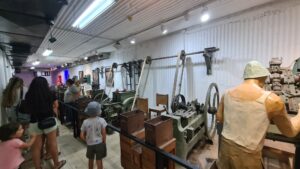 The underground factory with its original machines.
The underground factory with its original machines.
The sound one machine made in this closed space, imagine the noise when they all worked at the same time.
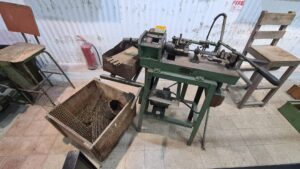 The cutting machine which used to make round brass plates for the cartridges. The brass was imported under the cover it will be used to produce lipstick cover. The only injury during 3 years of activity, was when the worjer operating this machine had a cut in his finger.
The cutting machine which used to make round brass plates for the cartridges. The brass was imported under the cover it will be used to produce lipstick cover. The only injury during 3 years of activity, was when the worjer operating this machine had a cut in his finger.
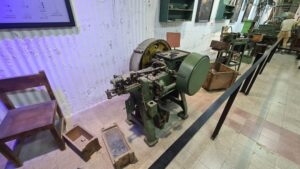 A machine to create the bullet from lead. The lead was stolen from Palestine Electric Corporation.
A machine to create the bullet from lead. The lead was stolen from Palestine Electric Corporation.
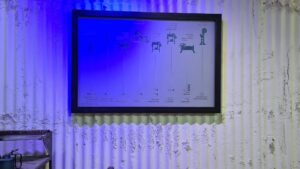 The machines used in the process of producing the bullets
The machines used in the process of producing the bullets
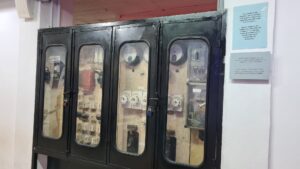 The electricity to the factory came from the electric company with the help of some Hagana people working in it. A thanking sign was hanged above cabinets.
The electricity to the factory came from the electric company with the help of some Hagana people working in it. A thanking sign was hanged above cabinets.
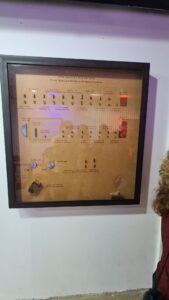 The process of producing the bullets
The process of producing the bullets
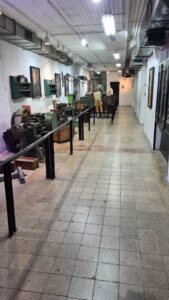 The producing hall from the other side
The producing hall from the other side
 The UV room, for the workers to get vitamin D
The UV room, for the workers to get vitamin D
The underground shooting range which was used to check the bullets. The gunpowder came from different sources (sometimes shells were disassembled) and the bullets had to be checked and sometimes to disassembled and assembled again.
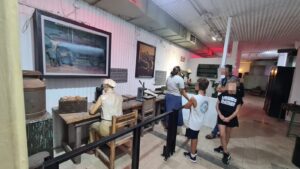 The most sensible work was to fill the cartridge with the gunpowder and close it which took place here.
The most sensible work was to fill the cartridge with the gunpowder and close it which took place here.
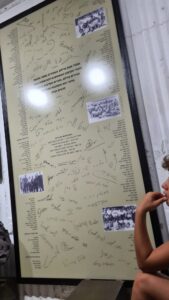 The signatures of all the workers in the factory during the years.
The signatures of all the workers in the factory during the years.
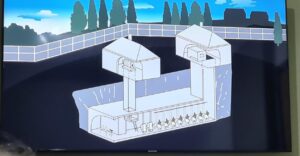 An illustration of the factory 4 meter underneath the laundry and the bakery.
An illustration of the factory 4 meter underneath the laundry and the bakery.
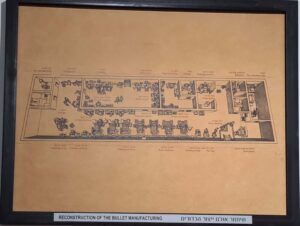 The factory map (250 square meters)
The factory map (250 square meters)
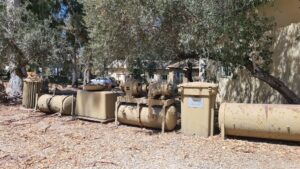 Some types of slicks from around the country, where the ammunition produced in Ayalon institute was hidden.
Some types of slicks from around the country, where the ammunition produced in Ayalon institute was hidden.
The dining hall of the Kibbutz
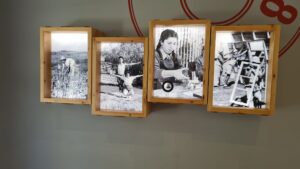 A 9mm bullet found in 2023 near Armon HaNtiz in Jerusalem, where biter fighting took place in the war of Independence and was produced here.
A 9mm bullet found in 2023 near Armon HaNtiz in Jerusalem, where biter fighting took place in the war of Independence and was produced here.

